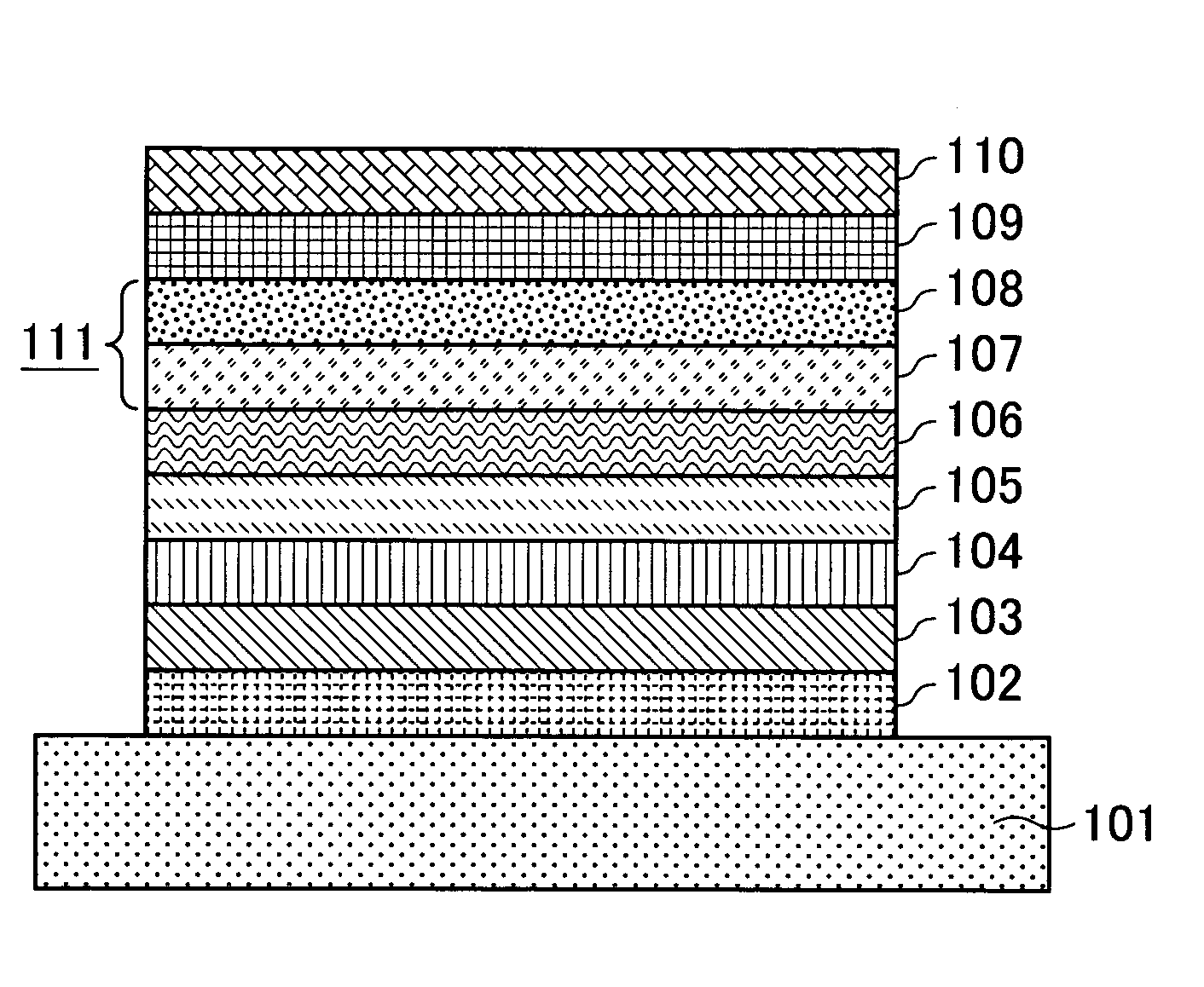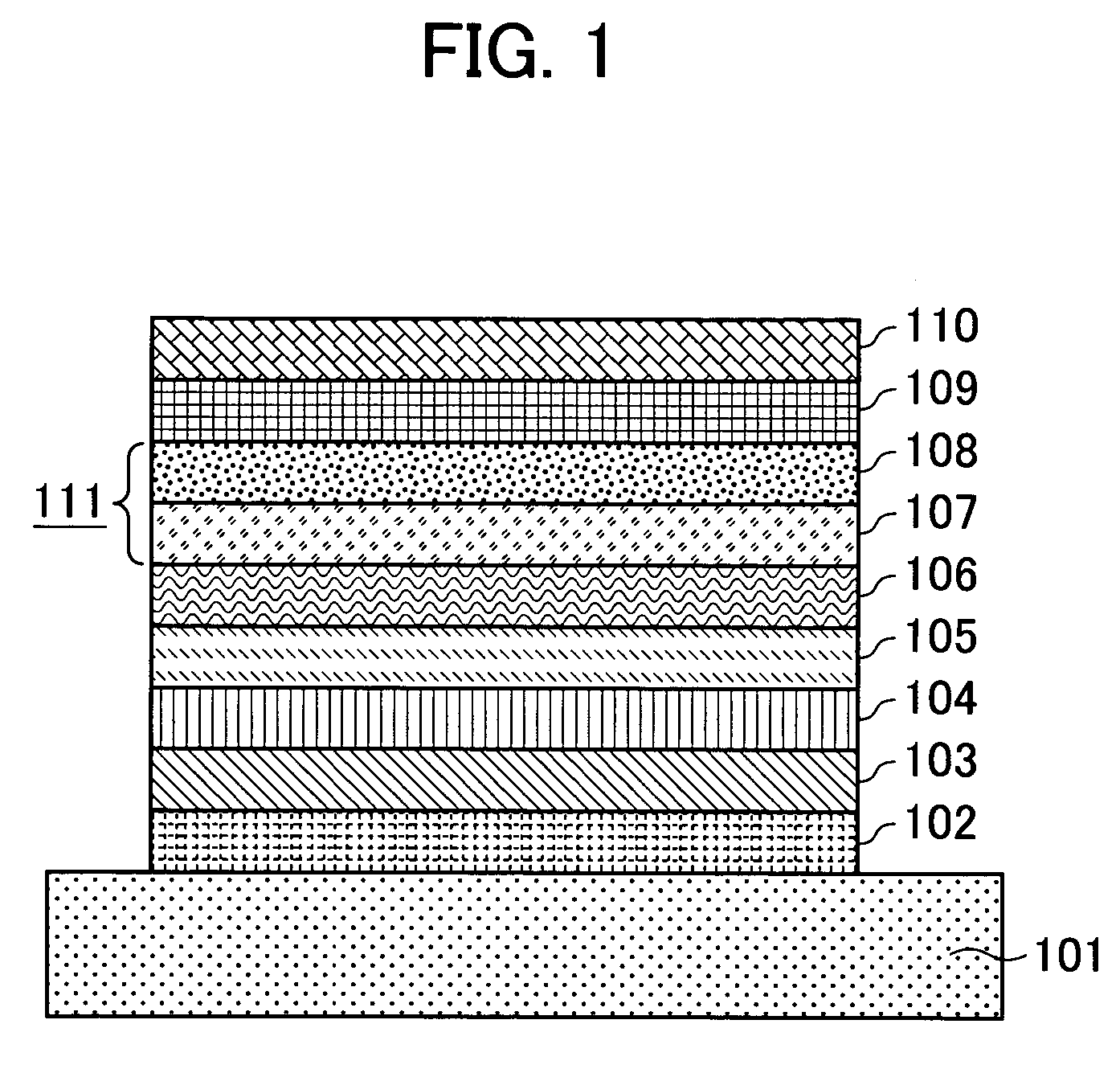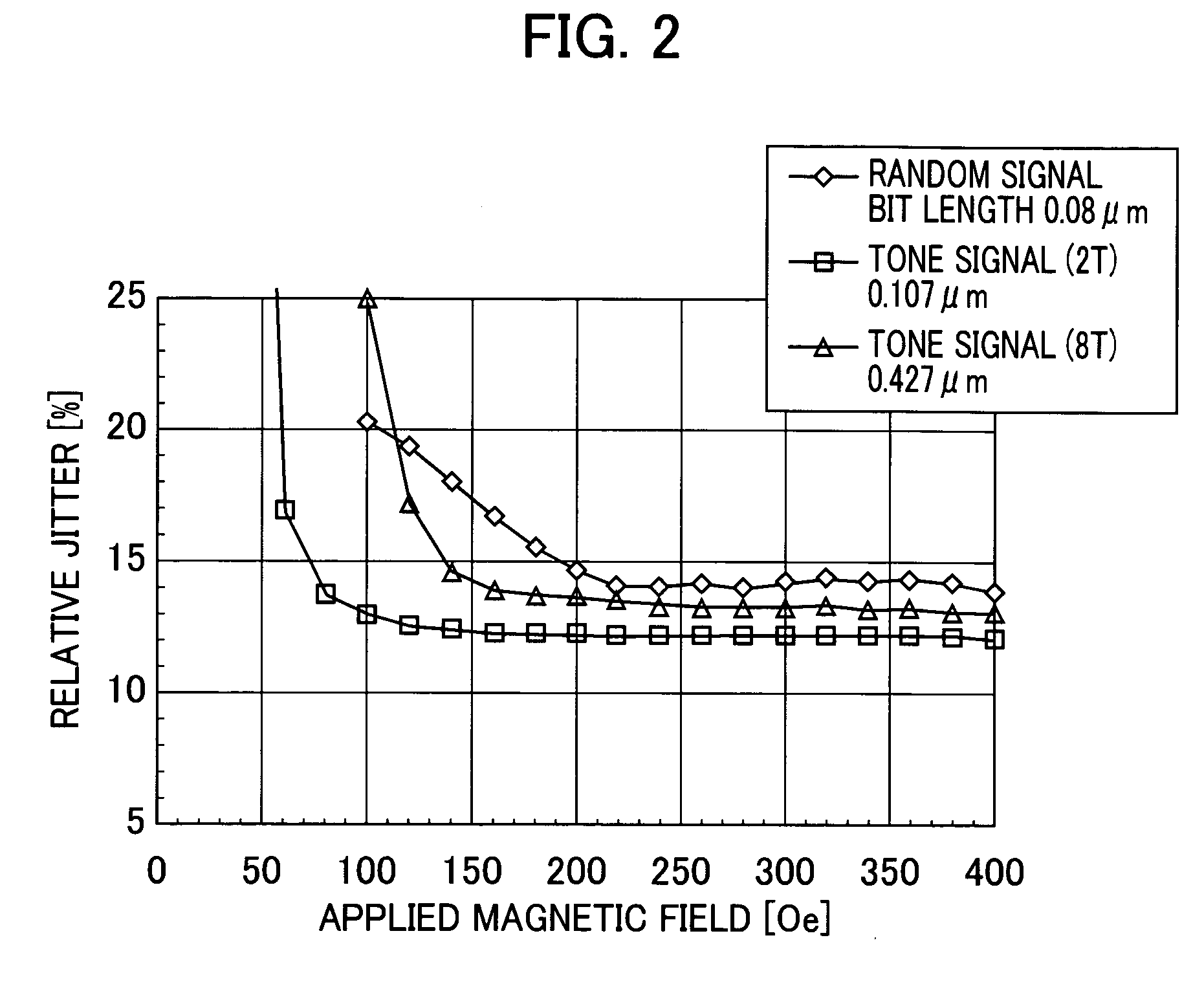Magneto-optical recording medium having in-plane magnetizing layer
a magnetic field and recording medium technology, applied in the field of magnetic field recording medium, can solve the problems of high mechanical accuracy, shallow depth of focus, and difficulty in reducing laser wavelength, and achieve excellent jitter properties in reading and high sensitivity to magnetic field
- Summary
- Abstract
- Description
- Claims
- Application Information
AI Technical Summary
Benefits of technology
Problems solved by technology
Method used
Image
Examples
example 1
[0043]Targets of B-doped Si, Gd, Tb, Fe, Co, and Cr were mounted in a DC magnetron sputtering apparatus. A land / groove substrate having a track pitch of 0.54 μm and a groove depth of 180 nm was fixed on a substrate holder, and then a chamber was evacuated to a vacuum of 2×10−5 Pa with a cryopump. Ar gas was introduced into the chamber while the vacuum condition was maintained in the chamber. The targets were sputtered to form layers while the substrate was rotated. A SiN layer was formed by DC reactive sputtering in N2 gas introduced in addition to argon gas.
[0044]That is, Ar gas and N2 gas were introduced into the chamber, and then a desired inner pressure was achieved by adjusting the conductance. A SiN layer having a thickness of 35 nm was formed as the first dielectric layer. The magnetic layers were formed in another chamber because contamination of nitrogen gas causes nitridation of the magnetic layer, which affects the magnetic properties. After the first dielectric layer was...
example 2
[0055]A sample was prepared as in Example 1, but with a change in the Curie temperature of the second auxiliary memory sublayer. As a result, when the Curie temperature of the second auxiliary memory sublayer deviated from the range of 240° C. to a temperature of 40° C. lower than the Curie temperature of the memory layer (in this example, the range 240° C. to 290° C.), the jitter properties and / or sensitivity to a magnetic field deteriorated.
example 3
[0056]A sample was prepared as in Example 1, but with a change in the thickness of the second auxiliary memory sublayer. As a result, when the thickness of the second auxiliary memory sublayer deviated from the range of 5 to 20 nm, the jitter properties and / or sensitivity to a magnetic field deteriorated.
PUM
| Property | Measurement | Unit |
|---|---|---|
| temperature | aaaaa | aaaaa |
| temperature | aaaaa | aaaaa |
| thickness | aaaaa | aaaaa |
Abstract
Description
Claims
Application Information
 Login to View More
Login to View More - R&D
- Intellectual Property
- Life Sciences
- Materials
- Tech Scout
- Unparalleled Data Quality
- Higher Quality Content
- 60% Fewer Hallucinations
Browse by: Latest US Patents, China's latest patents, Technical Efficacy Thesaurus, Application Domain, Technology Topic, Popular Technical Reports.
© 2025 PatSnap. All rights reserved.Legal|Privacy policy|Modern Slavery Act Transparency Statement|Sitemap|About US| Contact US: help@patsnap.com



